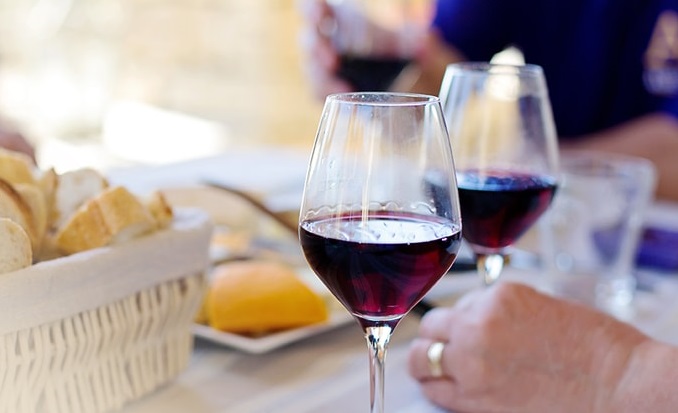For someone who’s new into this world of wines, understanding jargons can be a little confusing. One might often witness experts using terms like mature, complex, full-bodied, dry… the list is never-ending! Today, in this blog post, we’re going to discuss about the body of a wine. And, before you start building any misconceptions in your mind—it’s not linked with the appearance.
Wine Body: Definition
Body of a wine, unlike in the case of an upstanding being, does not define the appearance of the subject but the texture and mouth-feel as you take a sip of your drink. It tells us its weight that you may feel in your mouth—heavy, light or maybe somewhere in between. For instance, comparing water with milk, both lie on extreme opposites of the spectrum. While the former feels light in mouth, the latter is comparatively heavier, with a rich texture.
Similarly, wines can be categorised as: light-bodied, medium-bodied or full-bodied. However, with milk, fat plays a major role, adding to the weight of the drink. Likewise, body of the wine depends on some factors. These are:
- Alcohol: It’s the most important determinant of all. Alcohol adds to the viscosity, which is in turn responsible for the heavy or light mouthfeel. The higher the alcohol, the heavier it would feel in mouth and vice versa.
- Viscosity: This refers to the consistency of a drink. It’s the weight of the drink or any liquid felt by us in the mouth. Viscosity can also be determined by appearance as well. When you swirl the glass of wine, you would find those legs/tears streaming down, which tell us about the wine’s consistency.
- Sugar Content: We know that sugar is converted into alcohol by yeast during fermentation. Thus, the more sugar content in the must, the higher the ABV. However, if the winemaker wishes to craft a light-bodied wine, he can stop the fermentation process in between resulting in high sugar & low alcohol content.
- Ripening Period: This depends upon the climate of the region and the grape variety being harvested. Grapes grown in cooler climate witness a shorter ripening period and thus, the sugar content would be less. In the latter case, there are some varieties that would naturally ripen early, providing similar results.
While buying wine online, you would definitely find one of these tags—light, medium or full body—in every description. Here’s a quick guide that would help you understand the significance of these terms and pick the best drops to suit your taste buds.

Light-Bodied Wines
Wines with 12.5% or less ABV would fall under this category. Akin to water, these have light viscosity. Mostly, white and rosé wines are light bodied. These are often described as lean and crisp, which does not make them inferior or unpleasant, but simply easy-drinking. You can pair them with similar, light and lean food like chicken, seafood, seasonal salads. A winemaker may also produce light-bodied red, quite unusual though. Some common examples include Riesling, Sauvignon Blanc, and Pinot Noir. Sparkling wines like the famous Italian Prosecco are also crafted with low alcohol content. That said, these can also be produced as medium-bodied wines.
Medium-Bodied Wines
All wines that contain 12.5-13.5% ABV can be termed as medium-bodied. Falling somewhere between the other two categories, these encompass a huge number of varieties and styles. Medium-bodied wines are also considered food friendly. One can find sparkling to rosé, white and red, a broad spectrum of wines under this category. Although, some wines like Fortified can never be medium-bodied as the standard alcohol content is very high. Here are a few popular examples—Merlot, Rosé, and Pinot Grigio. These also include the renowned French Burgundy.
Full-Bodied Wines
Last, but very popular, full-bodied wines are those that have 13.5% or above ABV. A broad spectrum of wines fall under this category. These would include fortified to red & some white (dry white varietals, particularly the ones aged partly or fully in oak, like Sauv Blanc or Chardonnay) wines. Many dessert wines like Sauternes too are full-bodied. Some red wine grape varieties like Shiraz & Cab Sav, known for their complex flavours, usually have alcohol content more than 13.5%. It’s very rare to find these being produced as easy-drinking or medium-bodied wines.
Complexity of flavours, richness, well-rounded palate and a lingering finish are some general characteristics one can associate with these wines. You may enjoy these beauties with hearty flavours like mushrooms or steak.
Author Bio: Natasha is a wine author and blogger at Justwines. She usually writes about wine recipes, wine tasting notes, tips, news and other wine related information.


